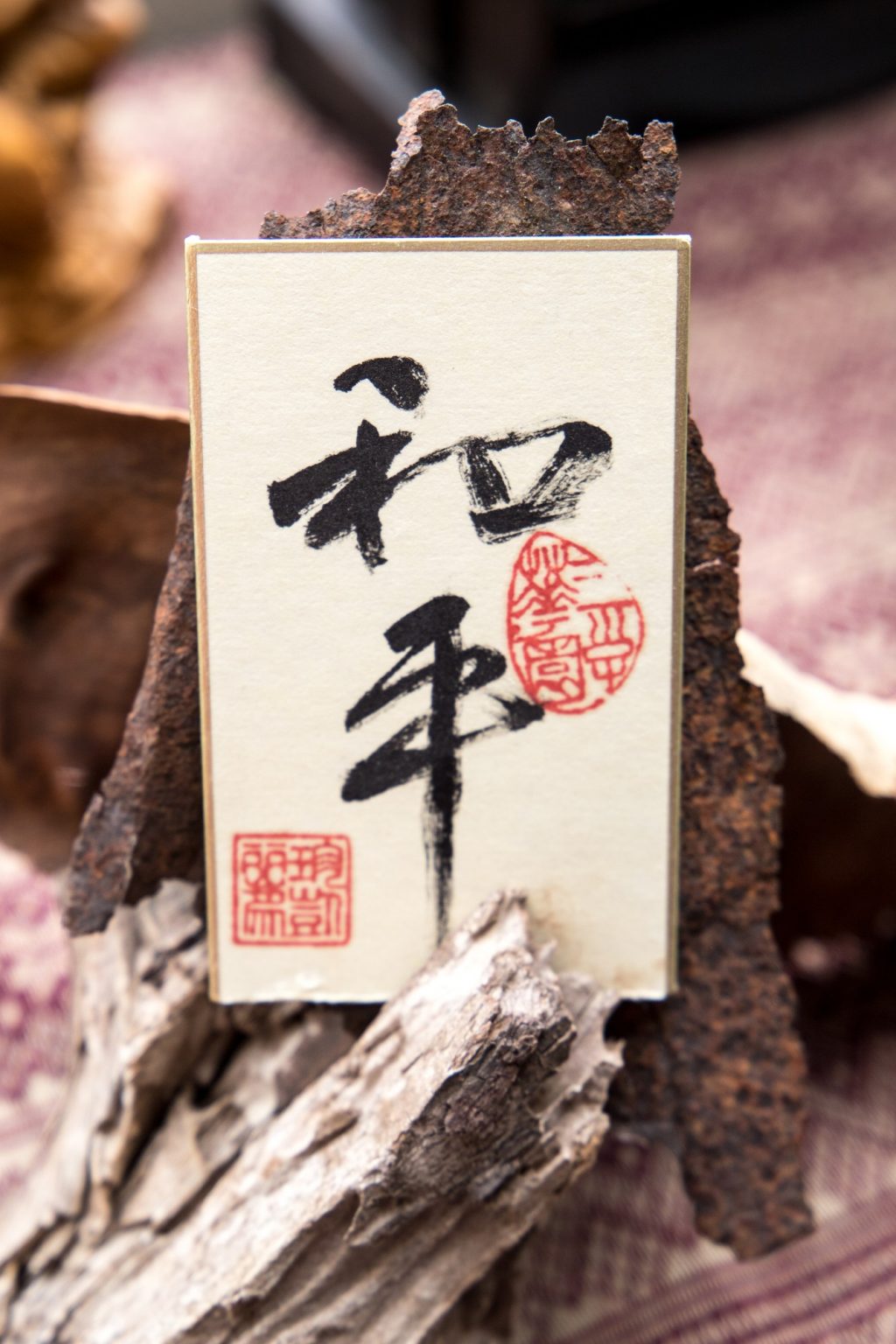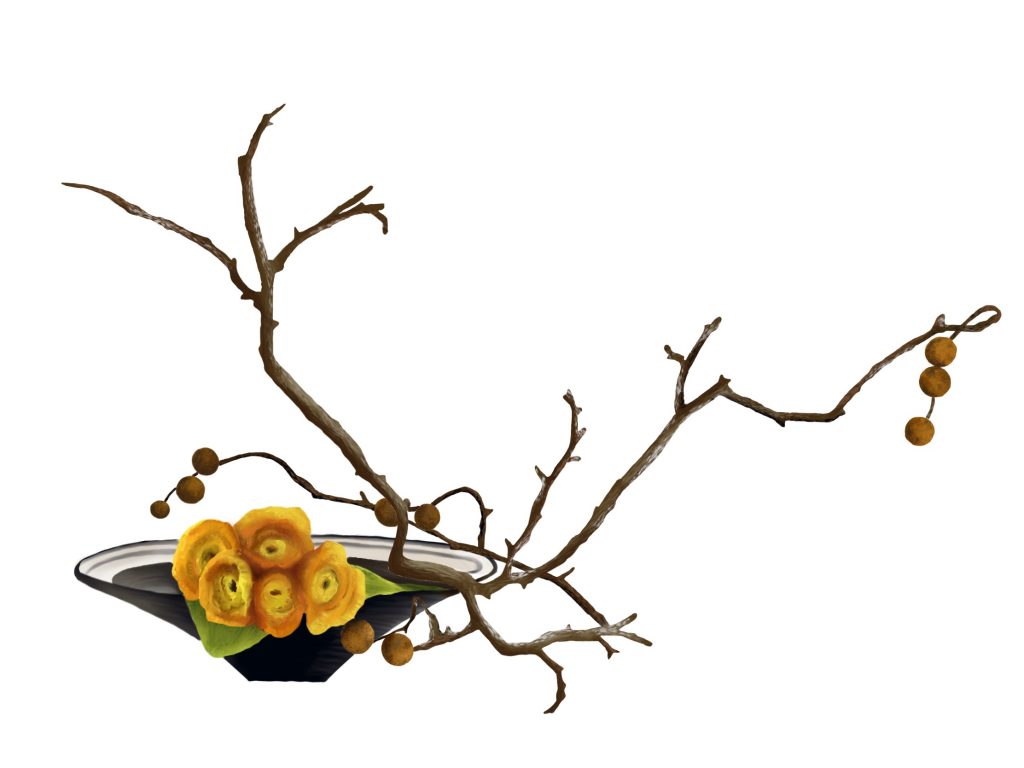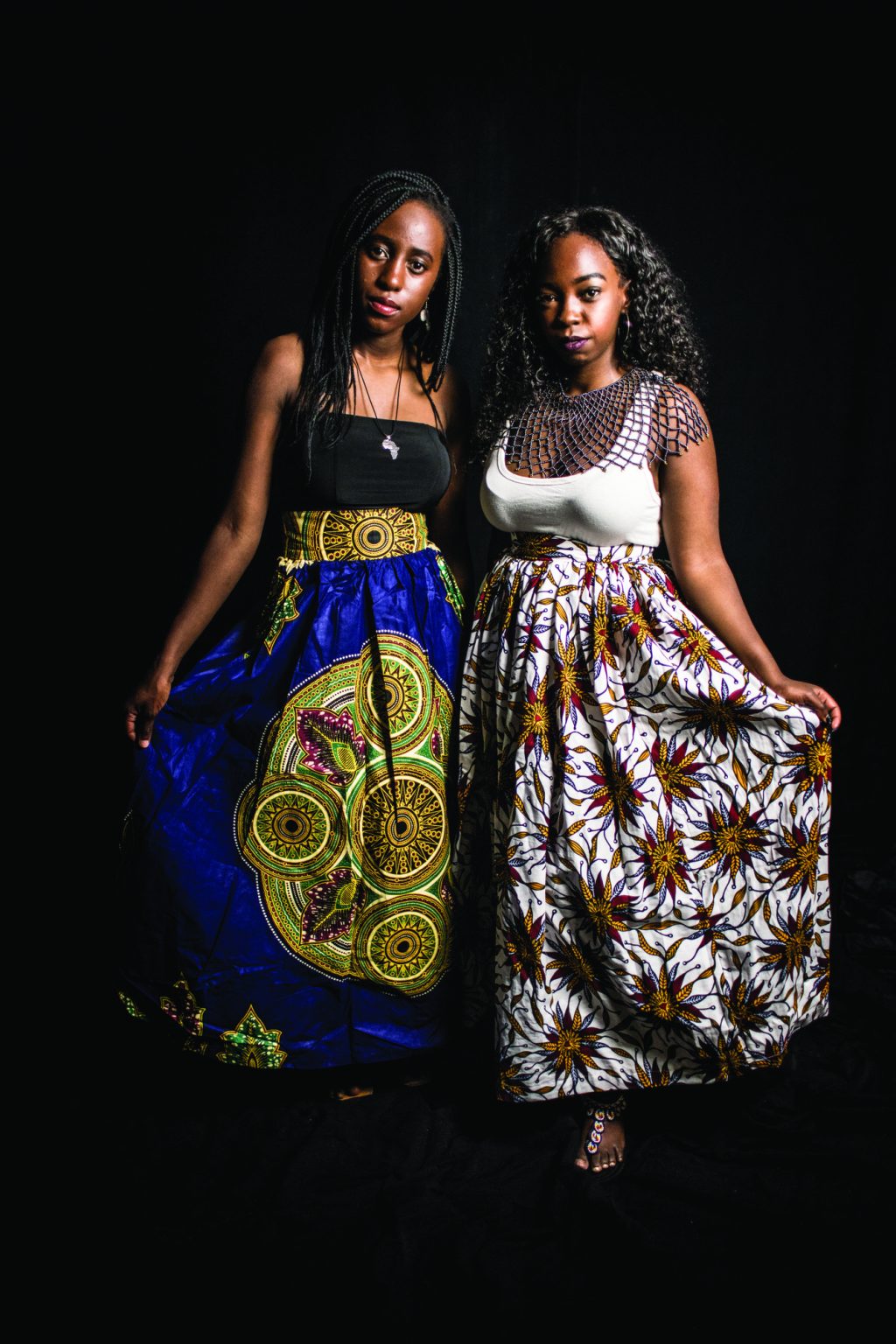Photo courtesy of Cecily Breeding
Art is found in the characters of different languages, imbalances in nature, music that drives revolutions and intricate beadwork in clothing. Beyond these forms of art are cultures waiting to be explored.
One doesn’t have to travel far to find art that comes from all around the world, as many forms are explored in classes, practiced in spiritual life and worn around campus.
Tai chi
University Associate Chaplain Eric Wilson was introduced to tai chi in Summer 1998.
“This is art,” Wilson said. “It’s more than just a meditation form, it’s more than martial arts, a way of hurting people. It rises to this bodily exploration of wisdom.”
Wilson was an acting coach at a UCLA acting academy where students started every morning with tai chi — half as a meditative component and half as a martial art.
Wilson continued tai chi when he moved to Missouri, attending class three times per week as a way to exercise while also having fun. His tai chi instructor specialized in the philosophy behind the art.
Two months into the class, Wilson arrived late. As he was apologizing for being late and expressing his efforts to “get it right,” his instructor asked him, “What’s with all this achieving and trying to figure out how to get it right?” He went on to say Wilson was beating himself up for something that takes two lifetimes to learn and perfect.
Wilson carried this philosophy into his spiritual life as a Christian.
“Am I trying to achieve it or am I trying to live in it?” Wilson asked. “What if it was about your being and your doing?”
As a follower of Jesus, Wilson tunes his ear and heart into who Jesus is and what Jesus teaches.
“If I’m studying ancient culture and I learn something that sounds just like the good shepherd’s voice, I’m tuning my ear because that sounds like my Jesus,” Wilson said. “If I’m learning about Jesus through other cultural experiences, it’s only strengthening my relationship with Jesus and my ability to love other people too.”
Wilson explains the philosophy of tai chi to be regaining the world’s initial state of balance that was disrupted. Tai chi, like other meditative arts, brings people back to balance in a way that accepts rather than opposes the force.
“My job is to help [my opponent] reestablish balance,” Wilson said. “The point they are swinging, I am not going to brace and push; that just causes more imbalance. I receive the punch, I grab that arm and I’m carrying it to its natural conclusion and they fall to the ground, thus reestablishing balance.”
Wilson said his time in this meditative art allows him to have an expanded consciousness. When others trigger his emotions, he acknowledges the choice to continue disruption or to restore balance. Tai chi fosters a mental space to choose his response.
Chinese calligraphy
When Great Books Professor Jane Kelley Rodeheffer’s son was growing up, he became interested in the characters on their Chinese ceramics around the house. Rodeheffer took him to Chinese school in Rochester, Minnesota, and accompanied him to a calligraphy class.
“I was taking the class with the kids because I wanted to learn Chinese and I figured starting with 5 and 6 year olds was the best way,” Rodeheffer said.
The calligraphy teacher, Aloysius Chu, had been on the last boat leaving China when Mao Zedong was coming down from Shanghai. When Mao became chairman of the People’s Republic of China and communists took control, socialist reforms resulting in violence and death caused many citizens to flee the country.
Rodeheffer asked Chu if he’d be willing to teach her calligraphy during her sabbatical.
“He took me on and my first compliment was, ‘Oh, that character looks like a 5-year-old Chinese girl made it,’” Rodeheffer said. “Mr. Chu came with me, for two years, to my university and taught me how to teach my students.”
While practicing calligraphy for the past 20 years, Rodeheffer studied the rituals of the art: how to hold the brush, how to grind the ink, how to write the Chinese characters. These particular steps allow the artist to slow down, creating the characters in a “dance to the meaning of the word.”
Photo by Milan Loiacono
Rodeheffer said she enjoys the meditative part of calligraphy — letting go of “outer worldly preoccupations.”
“Seeing my calligraphy get better over the years and feeling like I have developed as a human being over the years are hand in hand,” Rodeheffer said. “And that’s a wonderful process.”
Great Books Professor Don Thompson was introduced to the art when Rodeheffer came to Pepperdine 20 years ago to teach other professors calligraphy.
“I was fascinated by the idea that calligraphy is not so much about producing some artistic work but the process and how it changes it,” Thompson said. “This is for anybody, not just for people who have been trained in calligraphy.”
Thompson sets aside a day in his Asian Great Books class for students to create their own scroll and try the ancient art. He teaches his students brush meditation, introducing calligraphy as a more sacred and respected art.
“It always takes the class and slows it down,” Thompson said. “It’s always a crazy semester, and we take this one day to breathe in a bit more deeply and get a glimpse of an ancient art form.”
Rodeheffer made a scroll that says, “sit down, drink tea,” a saying that comes from values found in zen calligraphy. Rodeheffer said the artistic elements from nature reveal what it means to be human.
“It means sit down, stop, rest, pay attention to the person who is in the room with you and drink tea,” Rodeheffer said. “Tea is the cup of humanity because there’s a whole ritual involved in it.”
Philosophies tied to tea rituals and values instilled in calligraphy reveal the complexity of the culture Rodeheffer explores in her Asian Great Books classes.
“The reason I bring calligraphy is for Western students encountering philosophical texts from the East,” Rodeheffer said. “To encounter those texts without a sense of the culture that gave rise to them is to really read them in a desert.”
Thompson learned and experienced the disciplined process of calligraphy, holding the brush as well as preparing the ink, in a particular way. The art provides a connection with his students who grew up practicing calligraphy in school.
“They’re thrilled that you’re interested in something from their culture — something they learned how to do as a child,” Thompson said. “For them, it’s a memory experience. It gives them a nostalgia too of their past and their families.”
Japanese ceramics
Rodeheffer continued to further her understanding of Asian culture in ceramics.
In the Japanese tradition, “wabi-sabi” is a term used for something that is natural in the rough sense, Rodeheffer said. Looking at Japanese tea bowls, they are not perfectly rounded at the top. This is an important part of the aesthetic, as every object should be unique.
“In the West, we like things that are perfectly symmetrical,” Rodeheffer said. “But that’s not natural. In the natural world, things aren’t perfectly symmetrical for the most part. The aesthetic is not symmetrical, but like me, more broken and non-symmetrical — rough around the edges.”
Rodeheffer compares the fire that creates the ceramics to the fire of life that has made its mark in different ways. Rather than going through a factory or assembly line, this cup is put through flames.
“It’s a kind of beauty that is much more expressive of our humanity,” Rodeheffer said. “There’s also a sense of loneliness — that it needs to be picked up and held. It draws to you because it’s solitary and rough.”
Photo by Milan Loiacono
She explained how the tea ceremony is tied to the idea of “ichi-go ichi-e,” which means “one opportunity, one chance.”
“This is the only time we will be in this room together with this tea and this conversation,” Rodeheffer said. “It’s this beautiful phrase that every moment is precious — to be fully present because never again will you have the chance to be with this person at this moment.”
Ikebana
Thompson’s wife, Nancy Shellady, used ikebana, Japanese flower arrangements to teach her students how to measure angles in her mathematics class at Oaks Christian School. Thompson used this form of art to connect his students to nature and Japanese culture.
“There you got a practice where you’re trying to arrange flowers and the goal is not to create something you would buy at a florist but more to create something that has character [that] visually represents something like solitude or being a little bit old, showing age,” Thompson said.
Art by Caitlin Roark
Based on the concept of “wabi-sabi,” Thompson encourages his students to find beauty in making their own variation of flowers in a vase.
“It’s therapeutic and very individual,” Thompson said. “It’s not [follow] the teacher’s model and make a copy but do your own thing.” These flower arrangements create a sense of imbalance with few flowers in an anti-symmetrical design — yet another way to make the art one’s own. This interactive art educates students about the values of another culture.
“I don’t think you can be introduced to a culture very well unless you incorporate art,” Thompson said.
Chilean music, literature and art
Chilean Literature and Latin Texts Professor Lila McDowell Carlsen’s eyes lit up as she discussed the Chilean artists she has studied and shared with her students.
To understand the effects of the social dictatorship and cultural blackout in Chilean history, Carlsen focuses on the artists who were silenced and the society that these artists sought to portray.
Carlsen pointed out Violet Parra and Victor Jara, two Chilean musicians who contributed to the folk art revolution in Latin America during the ’60s.
Parra put a poem called “Gracias a la Vida” to music, sharing the stories of the working indigenous people of Chile. Jara’s song “Te Recuerdo Amanda” was about two factory workers who were in love.
“Who writes a song about factory workers? People who think that these songs are important,” Carlsen said. “The folk explosion was very popular and widespread music for the people, by the people that really had a following.”
Music became dangerous in Chile because of the free expression of ideas.
“During the dictatorship, the folk movement was illegal, completely banned, because its music was in favor of people protesting poverty and oppression and in favor of the right to have a happy life,” Carlsen said.
This “cultural blackout,” with heavy state censorship, forced the arts to go underground or to go into exile and publish from abroad, Carlsen said. A renaissance broke out in 1990, bringing back artists and novelists.
Isabel Allende was the first contemporary Latin American female novelist published, with her work translated in 30 languages. Carlsen found that her students enjoy Allende’s overt romance and page-turning storytelling style.
“When they really respond to a piece of text like that, there’s something to be said for that,” Carlsen said. “It opens a door for publishers to sell women’s stories.”
Another Chilean artist with a global presence is Roberto Matta, a post-expressionist with abstract style. Carlsen highlights his piece “Burn Baby Burn,” a mural he painted in the ’60s to protest the Vietnam War and the Watts Riots.
Although Chile is a small country, Carlsen said Chilean artists intersect with many other cultures.
Alfredo Jaar, known for installation art, put up a light display in Times Square called Logo for America. As the cut out of the United States faded away revealing, “This is not America,” North and South America appear as continents. His aim was to showcase the American continent as more than the United States.
African clothing
Born and raised in Kenya, Resident Director Sharon Wakio has seen African clothing evolve.
“Now I feel like everybody wears it just because it’s edgy,” Wakio said. “Honestly, I wear African clothing because it’s edgy. It takes a lot of boldness and it’s a conversation starter.”
Although Africa consists of over 50 different countries, Wakio said there is some consistency in the color, brightness and fabric used. There are specific patterns, ways clothing is worn and manner in which beadwork is designed.
“There is something about picking the fabric, choosing a pattern or design, finding a tailor, so when you put that on, there’s a sense of pride that comes with it and originality,” Wakio said.
Modeled by Tinashe Nyamupingidza and Soni Rusagara, photo by Milan Loiacono.
Art is also affected by the intersection of cultures. Living in Kenya, a country with many traces of British culture, Wakio has seen the direct influences of European colonization on African clothing.
“Kenya is very British so we tailor-make everything,” Wakio said. “It is a culture where you go buy the fabric and you tell the tailor what you would like. Here it’s more of a luxury but back home it’s a necessity.”
Wakio calls it a “second-hand thrift culture,” making shopping much more of a task in a market of clothes that have been designed for someone else.
Wakio sees the pride and originality tied to African clothing as an opportunity to educate others on her culture.
“Not only is it a conversation starter about what I’m wearing or why I’m wearing it, but [it’s] also an opportunity to educate people who want to know more about what culture looks like and remove [the] stereotype of Africa as a place where people are hungry and have flies in their eyes and they don’t have a development of any kind,” Wakio said.
Wakio’s home church partnered with women from the Maasai culture by buying beadwork to sell at its conferences in an effort to support their families. She describes this time-consuming, handmade work as art.
“I wear it in support of those women who are trying to feed their families in creating or making this beadwork,” Wakio said. “It’s more about me displaying the hard work of the Maasai women that have put the effort in creating these beautiful pieces.”
Kenyan worship music
Another form of art is music, specifically worship. Unlike the contemporary worship music from Bethel and Hillsong, Wakio describes the worship she grew up with to be “a lot of noise” accompanied with dancing and movement.
Wakio said it is not uncommon for women to remove their heels during worship and sweat off all of their makeup after dancing.
“You would have put at least an hour into your makeup knowing well that after praise and worship, you’d probably be wiping it all off,” Wakio said.
When people are unable to give financially, Wakio said they are able to give by praising and worshipping through music.
“Music is huge for us,” Wakio said. “African beats are very different. Ours is a lot of [drums] and very dancing- and movement-friendly.”
With over 48 tribes in Kenya, many of which have different dialects, Wakio said there is a simplicity to their worship that is flexible across many languages.
“We are able to sing most songs in different languages,” Wakio said. “Switching back and forth between languages makes it powerful. God’s spirit transcends language.”
Follow Currents Magazine on Twitter: @Peppcurrents




